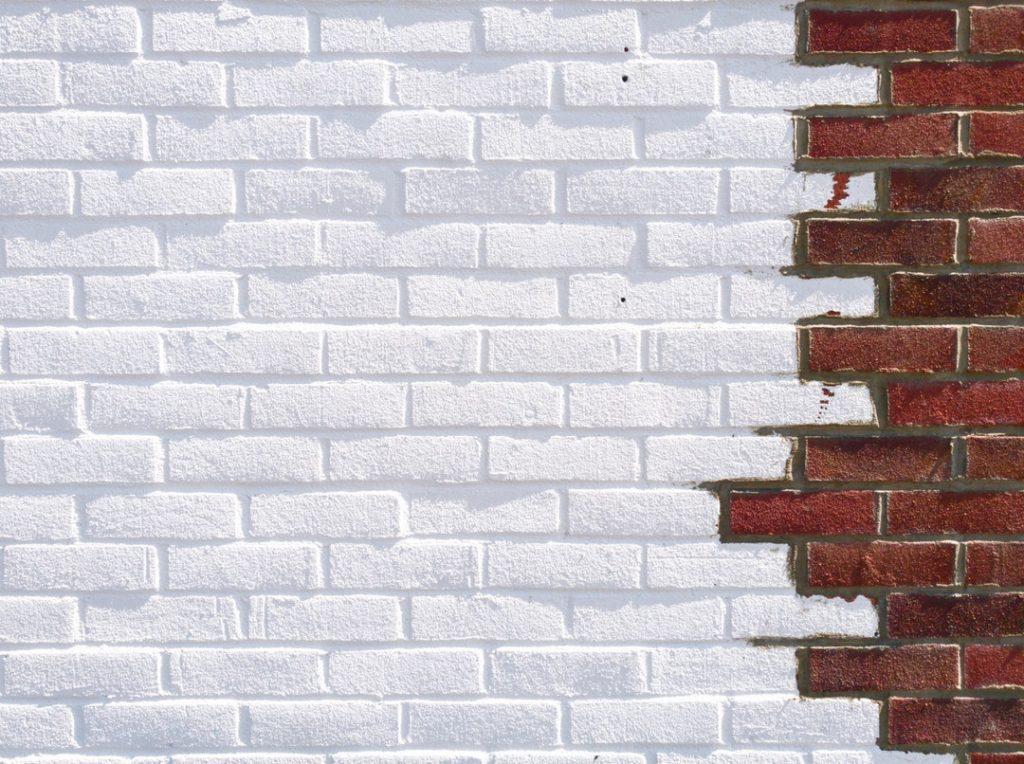Everything You Need to Know About Painting Brick
Painting over brick can be an easy way to update the look of any exterior or interior space—just look at the Whole Home patio by designer Max Humphrey. The outdoor living room, as he described it, is wrapped with white bricks to bring a modern edge to the rustic Colorado space.
But painting brick isn't as simple as throwing some paint on drywall; if not done correctly, you could end up with flaking paint or even an alkali-burned topcoat. So we asked Octave Villar, applications and lab manager at Kilz Primers & Paints, what you should know before picking up a brush.
That's right: A just-built brick wall is not a good canvas. "Brand-new brick and mortar can exude a powdery substance, so you want to give it at least a month to cure before painting it," says Villar. "Otherwise, it's going to be super chalky and not hold on to the paint as well."
Hisham IbrahimGetty Images
You'll need to make sure sure the brick surface is totally clean of loose debris or greasy stains. "If you don't wash the brick first, you're basically just painting over sand and dust, and it won't bind," says Villar. A light power wash will usually suffice for exterior brick; for interiors, a thorough cleaning with soap and water should do the trick. Give the brick ample time to dry, then go ahead and patch up and missing mortar or cracks if necessary.
Home DepotKilz 2 All-Purpose Multi-Surface Primerhomedepot.com$18.98SHOP NOWNo matter whether the brick you're painting is old or new, interior or exterior, you absolutely must use a primer. "You want a primer that will 'bite' into the brick; the better it can wrap around those pores and get into all the nooks and crannies, the better the paint will adhere," says Villar.
Primers made for brick and masonry are your best bet. "They're usually a little thinner, which helps the primer penetrate into brick's porous surface and bind any chalky or loose materials, and they have more alkaline resistance, which keeps the top coat of paint from getting alkali burn," he explains. Choose a water-based primer if you're planning to use latex paint, or opt for an oil-based primer for oil paints.
Home DepotWooster 2-1/2 in. Chinex Angle Sash Brushhomedepot.com$16.66SHOP NOWSince you're dealing with a material that's far more rough and porous than your typical drywall, you're going to need an applicator that can stand up to wear and tear. "Use a synthetic bristle brush, and don't go cheap," warns Villar. His pick: a Chinex brush, "which is designed to take a beating without becoming bent and misshapen," he says.
If you're painting larger areas and want to use a roller, choose one with a high nap—at least half an inch, says Villar—which will ensure that the primer gets into all the crevices. And if you're using an airless paint sprayer, go back over the surface with a damp roller when you're done spraying to really work the primer into the brick's surface.
Home Depot3/4 in. Polyester Paint Roller with Framehomedepot.com$6.27SHOP NOWOnce the all-important prep work is complete, you can go ahead and paint on the top coat in the color of your choice. Any sheen or formula will work just fine as long as you've primed. "Generally people like to use a higher-sheen formula on brick because it's more resistant to marring and staining, but you can also use an eggshell or flat finish if that's the look you want," says Villar. A latex paint will be more quick-drying and be easier to clean up, whereas an oil-based paint will dry to a harder finish.
And that's it! Painted brick shouldn't require a sealer—just make sure to choose a wear-resistant exterior paint if the brick will be exposed to the elements.
Follow House Beautiful on Instagram.







